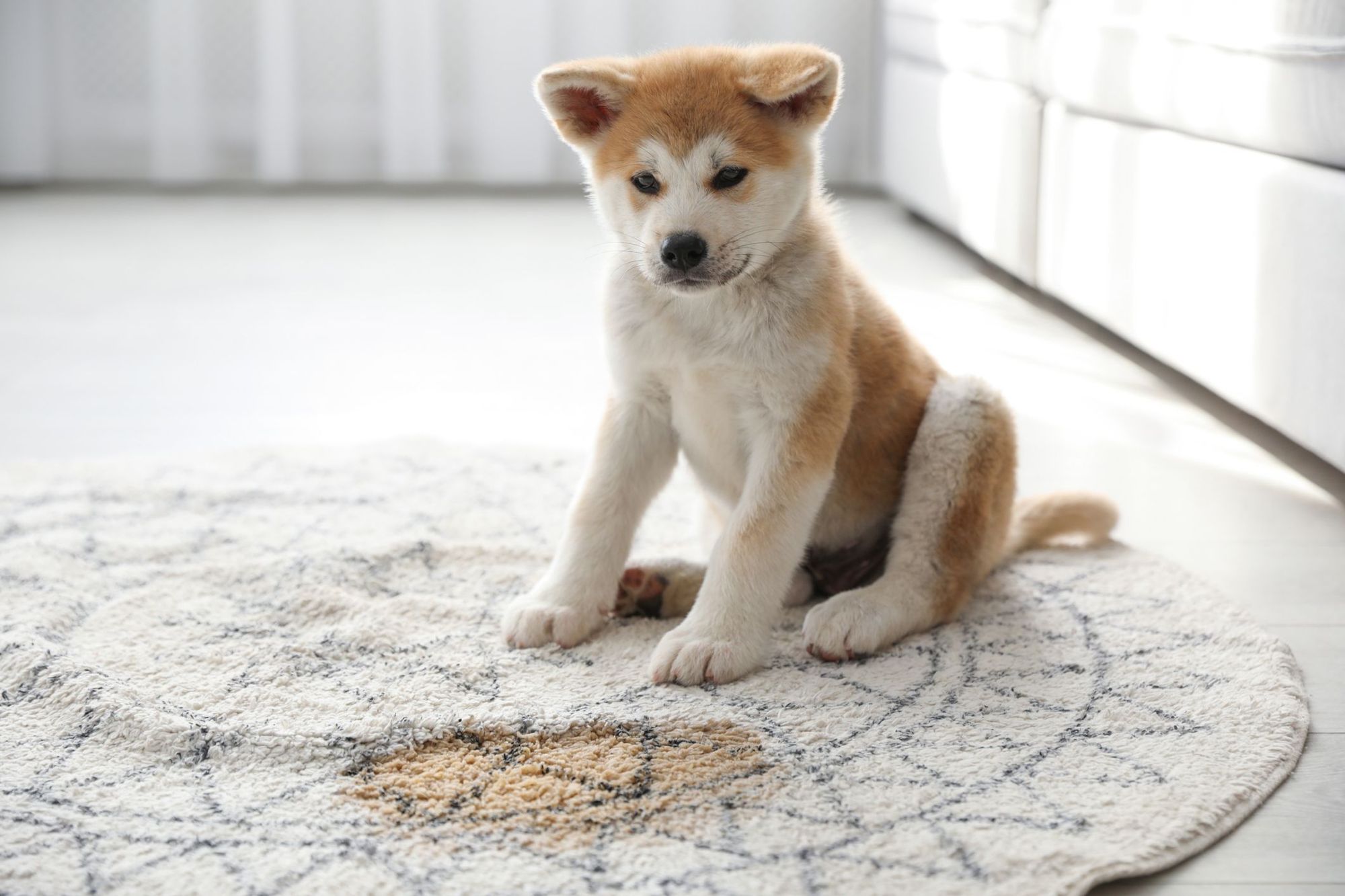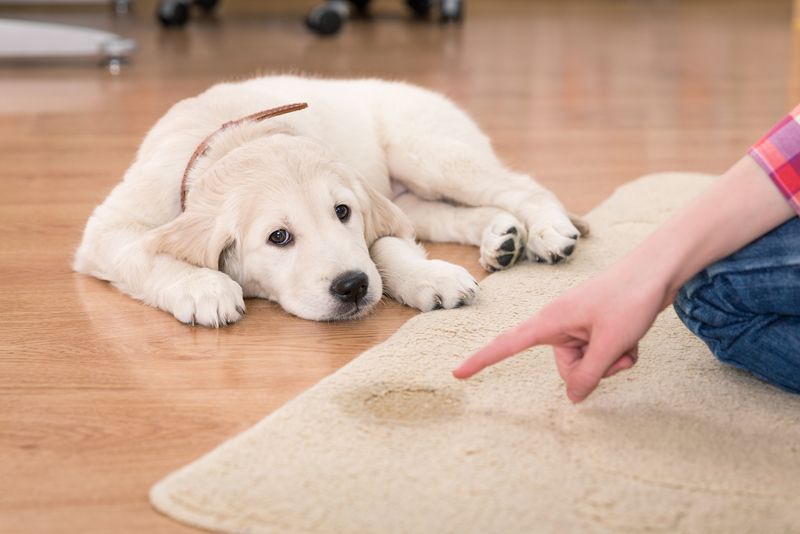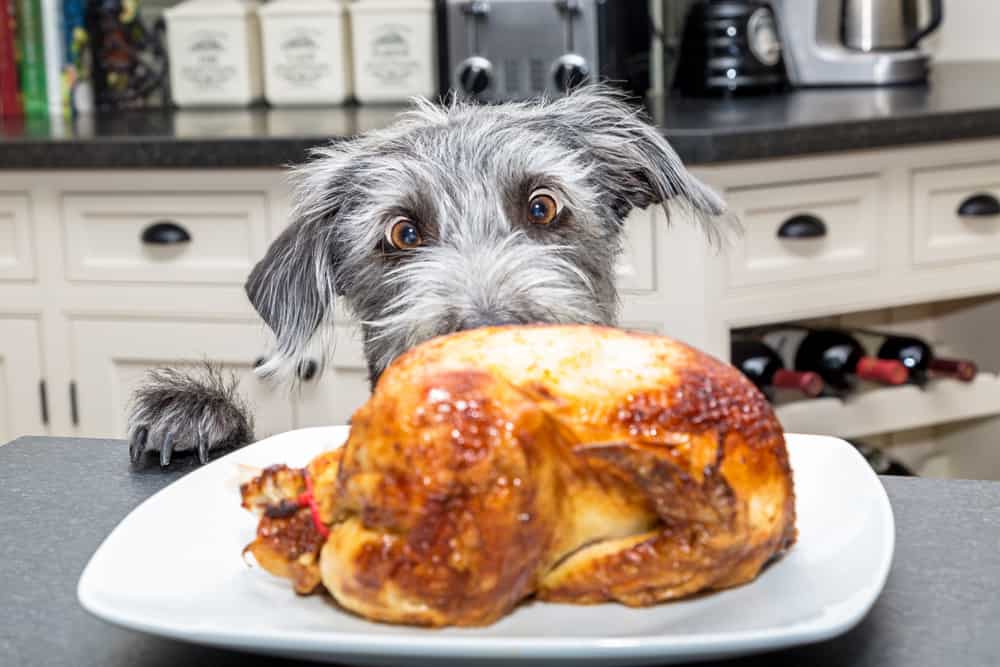Pet ownership brings joy, companionship, and sometimes, unexpected messes. One common challenge is dealing with dog vomit, which, when not addressed promptly and properly, can lead to stains, odors, and potential health risks for your furry friend. In this guide, we'll walk through the process of cleaning dog vomit effectively, ensuring a clean and healthy living environment for both you and your pet.

Understanding Dog Vomit
Before diving into the cleaning process, it's crucial to understand why dogs vomit. Dogs can vomit for various reasons, including dietary issues, ingestion of foreign objects, or underlying health concerns. Identifying the cause is essential for both cleaning and ensuring your pet's well-being.
Preparation for Cleaning
When faced with the task of cleaning dog vomit, preparation is key. Gather the necessary cleaning supplies, including disposable gloves, paper towels, pet-safe stain removers, and odor neutralizers. Using products specifically designed for pet messes ensures a thorough cleanup without compromising your pet's health.
Step-by-Step Cleaning Process
Immediate Cleanup
The moment you discover dog vomit, act promptly. Immediate cleanup prevents stains and lingering odors. Put on disposable gloves to maintain hygiene and safety throughout the cleaning process.
Remove Solid Debris
Start by gently scooping up any solid debris with a plastic bag. Seal the bag tightly and dispose of it properly. This initial step makes the subsequent cleaning process more manageable.
Blotting Technique
Avoid the temptation to rub the affected area vigorously. Instead, use paper towels to blot excess moisture gently. This prevents the vomit from spreading and causing further damage to carpets or other surfaces.
Stain Removal
Choosing the right stain remover is crucial. Opt for pet-safe products to ensure the health and safety of your furry friend. Different surfaces may require specific cleaning approaches, so tailor your strategy accordingly.

Dealing with Odor
When it comes to cleaning up after your furry friend, tackling the issue of odor is paramount. Dog vomit can leave behind not only unsightly stains but also persistent and often unpleasant smells. In this section, we'll delve into authoritative strategies to ensure your cleaning efforts not only remove stains but also leave your living space smelling fresh and inviting.
Neutralizing Odors: The First Line of Defense
The key to a successful cleanup operation is to neutralize odors effectively. Traditional air fresheners may mask the smell temporarily, but for a thorough solution, invest in pet-friendly odor neutralizers. These products are specifically formulated to combat the unique and sometimes stubborn odors associated with pet messes.
DIY Solutions for Odor Control
For those who prefer a hands-on approach, crafting your own DIY odor neutralizer is a viable option. Baking soda and white vinegar, for instance, can be mixed to form a powerful yet pet-safe cleaning solution. Sprinkle baking soda over the affected area, followed by a gentle spray of the vinegar mixture. Allow it to sit for a brief period before blotting it away with paper towels.
The Importance of Timely Action
Acting promptly is crucial in the battle against odors. As soon as you discover the dog vomit, initiate the cleanup process. The longer the mess sits, the more challenging it becomes to eliminate both the stain and the associated odor. Immediate action sets the stage for a more effective cleanup operation.
Persistent Odors and Underlying Issues
If you find yourself dealing with persistent odors despite thorough cleaning, it might be an indicator of an underlying issue. Check for hidden stains or residues that may have been overlooked during the initial cleanup. Additionally, consider consulting with a veterinarian to rule out any health concerns that might be contributing to recurring odors.
Choosing the Right Products
Not all cleaning products are created equal when it comes to handling pet odors. Opt for enzymatic cleaners designed specifically for pet messes. These cleaners break down the organic compounds in vomit that cause odors, ensuring a more comprehensive and long-lasting solution.
Ventilation Matters
During and after the cleaning process, ensure proper ventilation in the affected area. Opening windows and using fans help disperse lingering odors, providing a breath of fresh air for both you and your pet. Adequate ventilation accelerates the drying process, minimizing the chances of odors becoming deeply ingrained in fabrics or carpets.
Maintaining Freshness Beyond Cleanup
Prevention is often the best cure. Establishing a regular cleaning routine, especially in areas where your dog frequents, can go a long way in preventing odors from becoming a persistent issue. Regularly wash pet bedding, vacuum carpets, and use pet-friendly air purifiers to maintain a consistently fresh environment.
Dealing with the odor left behind by dog vomit requires a strategic and authoritative approach. By neutralizing odors promptly, utilizing effective cleaning products, and addressing any underlying issues, you can ensure that your home remains a pleasant and inviting space for both you and your cherished pet.
Coping with Persistent Stains
When faced with the aftermath of dog vomit, the battle doesn't end with mere cleanup; persistent stains can be the final frontier in restoring your living space to its pristine condition. In this authoritative guide, we will unravel strategies to conquer stubborn stains effectively and reclaim the visual appeal of your home.

Understanding the Challenge
Persistent stains demand a comprehensive approach. Different surfaces—carpet, hardwood, and upholstery—require tailored strategies. Recognizing the nature of the surface and the composition of the stain is the first step in formulating an effective plan of action.
Carpet Stains: The Art of Precision
Carpeted areas often bear the brunt of pet-related incidents. Immediate attention is crucial. Begin by blotting the affected area with absorbent paper towels. Avoid rubbing, as this can exacerbate the stain. Once excess moisture is absorbed, employ a pet-safe stain remover, applying it with a gentle, dabbing motion. Be thorough yet patient, ensuring the cleaner penetrates deep into the carpet fibers.
Hardwood and Other Surfaces: Swift and Strategic Cleansing
Hardwood floors and other surfaces demand a different approach. Wipe away any visible debris, then utilize a pet-safe cleaning solution suitable for the specific surface. Avoid excessive moisture to prevent damage. Swift action is key, as prolonged contact with acidic elements in vomit can mar the surface and compromise its integrity.
The Role of Temperature in Stain Removal
Consider the temperature of the cleaning solution. In many cases, lukewarm water is sufficient. For stubborn stains, a slightly warmer solution may enhance the effectiveness of your chosen cleaner. Exercise caution, however, as extreme temperatures can damage certain surfaces.
Preventing Long-Term Damage
Beyond immediate stain removal, focus on preventing long-term damage. Carpets, in particular, can suffer if residues are left behind. Rinse the cleaned area with water and blot again to ensure no cleaning product remains. Adequate drying time is crucial to prevent mold or mildew growth.
Tailoring Strategies to Surface Type
Different surfaces demand different strategies. Delicate fabrics or intricate patterns may require specialized cleaning techniques. Before applying any cleaning product, test it on a small, inconspicuous area to ensure compatibility and prevent unintended damage.
Health-Conscious Stain Removal
Maintain a health-conscious approach to stain removal. Opt for pet-safe, eco-friendly products that not only tackle stains effectively but also ensure the well-being of your four-legged companion. Avoid harsh chemicals that may pose health risks to both pets and humans.
Professional Assistance: Knowing When to Call In the Experts
While many stains can be tackled at home, some situations warrant professional intervention. If your efforts prove futile or if the stain is deeply embedded, consider consulting with professional pet cleaning services. These experts possess the tools and expertise to address even the most stubborn stains.
Coping with persistent stains left by dog vomit demands a proactive and authoritative approach. By understanding the nature of the stain, tailoring your strategy to the surface type, and maintaining a health-conscious mindset, you can transform your living space into a stain-free haven for both you and your beloved pet.
Health Check
The aftermath of dog vomiting not only requires diligent cleaning but also demands a vigilant health check for your furry companion. In this authoritative segment, we explore the crucial steps to ensure your pet's well-being after a bout of vomiting.
Monitoring Your Dog: The First Line of Defense
Immediate attention to your dog's well-being is paramount. Post-vomiting, closely monitor your pet for any signs of distress or abnormal behavior. Abnormalities may include lethargy, excessive drooling, or reluctance to eat or drink. If you observe any concerning symptoms, it's imperative to seek veterinary advice promptly.
Signs that Require Urgent Attention
Certain signs warrant immediate veterinary attention. Persistent vomiting, especially if it occurs repeatedly within a short period, can be indicative of underlying health issues. Blood in vomit, lethargy, or a distended abdomen are red flags that should not be ignored. Your pet's health should always be the priority.
Hydration: A Key Indicator of Well-Being
Monitor your dog's water intake. Vomiting can lead to dehydration, and it's crucial to ensure that your pet stays adequately hydrated. Encourage drinking and, if necessary, consult your veterinarian for advice on rehydration methods.

Preventive Measures: Fortifying Your Pet's Health
Beyond immediate care, taking preventive measures is instrumental in reducing the likelihood of recurrent vomiting episodes. Consider the following authoritative steps to fortify your pet's health:
Dietary Adjustments: Tailoring Nutrition to Your Pet's Needs
Work closely with your veterinarian to assess your pet's diet. Dietary issues are a common cause of vomiting, and adjusting your pet's nutrition can mitigate the risk of future incidents. Opt for high-quality, easily digestible dog food that aligns with your dog's specific health requirements.
Regular Veterinary Checkups: Proactive Health Management
Scheduled veterinary checkups are essential for proactive health management. Regular examinations enable early detection of potential health issues, allowing for prompt intervention and prevention of more severe complications. Your veterinarian can provide personalized advice on maintaining your pet's well-being.
Maintaining a Clean Living Environment: A Preventive Paradigm
A clean living environment contributes significantly to your pet's health. Regularly clean and sanitize areas where your dog spends time, minimizing exposure to potential contaminants. A clean environment reduces the risk of ingestion of harmful substances and promotes overall well-being.
Exercise and Mental Stimulation: The Holistic Approach
Physical exercise and mental stimulation are vital components of a pet's well-being. Regular walks, playtime, and engagement with interactive dog toys not only keep your dog physically healthy but also contribute to mental well-being. A stimulated and happy pet is less prone to stress-related vomiting.

Monitoring your happy dog's health post-vomiting is an essential aspect of responsible pet ownership. By staying vigilant, seeking prompt veterinary attention when needed, and implementing preventive measures, you contribute to the overall well-being and happiness of your cherished companion.
Educating Pet Owners for Professional Help
Responsible pet ownership involves educating yourself and others about proper pet care. Share your knowledge with fellow pet owners to contribute to a healthier and cleaner pet community.
While most incidents can be handled at home, there are situations where professional help is necessary. Recognize the signs that indicate a need for expert cleaning services.
Conclusion
Cleaning dog vomit may not be the most pleasant task, but it's a crucial aspect of responsible pet ownership. By acting promptly, using the right products, and understanding your pet's health, you can ensure a clean and safe living environment for both you and your furry companion.
Frequently Asked Questions:
- Q: Can I use regular household cleaning products to clean dog vomit?
- A: It's best to use pet-safe products to ensure the health and safety of your dog. Regular household cleaners may contain chemicals that can be harmful to pets.
- Q: How do I prevent my dog from vomiting regularly?
- A: Consult with a veterinarian to identify the underlying cause. Adjust your dog's diet based on professional advice and establish a regular cleaning routine to maintain a clean environment.
- Q: Are there any home remedies for removing dog vomit stains and odors?
- A: Yes, you can use household items like baking soda and vinegar to create DIY stain removers and odor neutralizers. However, always test on a small, inconspicuous area first.
- Q: Can persistent vomiting be a sign of a serious health issue in dogs?
- A: Yes, persistent vomiting can indicate underlying health problems. If you notice any concerning symptoms, it's essential to seek veterinary attention promptly.
- Q: How often should I clean areas where my dog vomits?
- A: Clean the affected areas immediately to prevent stains and odors. Establish a regular cleaning routine, especially if your dog has a history of vomiting, to maintain a clean living space.






